| Voice/Instrument: |
Biography
Renata Tebaldi (Pesaro, Italy) was an Italian lirico-spinto soprano, popular in the post-war period. Acclaimed as one of the most beloved opera singers of all time, she primarily focused on the verismo roles of the lyric and dramatic repertoires.Contents
Early years
Tebaldi was born Renata Ersilia Clotilde Tebaldi in Pesaro, the daughter of a cellist, Teobaldo Tebaldi, and Giuseppina Barbieri, a gifted singer who had wanted a singing career but eventually became a nurse instead. Very soon, the parents split up and Renata, together with her mother, moved to the latter's home town, Langhirano in the Province of Parma.
Stricken with polio at the age of three, Tebaldi was unable to take part in strenuous activities and instead became interested in music. She was a member of the church choir in Langhirano and her mother sent her to piano lessons with Signorina Passani in Parma at the age of thirteen; she worked with boundless diligence, practising four or five hours a day and dreaming of a career as a concert pianist. She also sang everything she heard. Her main source of inspiration was listening to the radio. It was not until her piano teacher took the initiative that Renata was sent to Italo Brancucci, a singing teacher at the conservatory of Parma. She began studying a short time later at the conservatory, taking lessons with Ettore Campogalliani for three years. Renata had to concentrate on scales and voice training for two years before she was allowed to learn the first songs towards the end of her second year of training.
Carmen Melis
She went off to spend a Christmas holiday with her father's brother, her uncle Valentino, at Pesaro. There, as operatic destiny would have it, Valentino owned a small café where the famous former diva Carmen Melis came to buy pastries. Melis was a teacher at the Pesaro Conservatory. Valentino talked to Melis about his niece, and the diva finally consented to audition the young girl. Melis had been a soprano prima donna at La Scala in Milan and had sung with Caruso and Titta Ruffo.
Melis was to become Tebaldi's most important teacher: the next day, and for the remainder of her holiday, Tebaldi worked with Melis; when she returned to Parma, the improvement was so drastic that no one believed it was the same voice. It was then that she determined to move to Pesaro permanently, where she lived with her father's family and took classes with Melis both at the conservatory and privately. Melis organised a scholarship for her and Tebaldi made her first public appearance singing "Ebben? Ne andrò lontana" from Catalani's La Wally at the theatre in Urbino. At the age of 22, Tebaldi made her debut as Elena in Boito's Mefistofele in Rovigo. She performed several more times in Parma - in La Bohème, L'amico Fritz and Andrea Chénier and started working, again through Melis, with the conductor and singing teacher Giuseppe Pais in Milan 1944. An audition for Giulio Gatti-Casazza, the Scala's director, came to nothing as there were hardly any performances anymore during the war years. She made her debut as Desdemona in Trieste alongside Francesco Merli and caused a stir.
Arturo Toscanini
Her major breakthrough came in 1946, when she auditioned in Milan for Arturo Toscanini. Toscanini was favorably impressed, calling her "voce d'angelo" (angel voice). Tebaldi made her La Scala debut that year at the concert which marked the reopening of the theatre after World War II. She sang the "Prayer" ("Dal tuo stellato soglio") from Rossini's biblical opera, Mosè in Egitto, as well as the soprano part in Verdi's Te Deum. She was given the operatic roles of Margherita and Elena in Mefistofele and Elsa in Lohengrin in 1946. The following year, she appeared in La Bohème and as Eva in Die Meistersinger. Toscanini encouraged her to sing the role of Aida and invited her to rehearse the role in his studio. She was of the opinion that the role of Aida was reserved for a dramatic soprano, but Toscanini convinced her and she made her role debut at La Scala in 1950 alongside Mario del Monaco and Fedora Barbieri in a performance conducted by Antonino Votto. This was the greatest success in her still young career and was to launch her international career.
Her voice was used for Sophia Loren's singing in the film version of Aida (1953).
International career
She went on a concert tour with the La Scala ensemble in 1950, first to the Edinburgh Festival and then on to London, where she made her debut as Desdemona in two performances of Otello at Covent Garden and in the Verdi Requiem, both conducted by Victor de Sabata.
Tebaldi and Callas
By the early 1950s, Tebaldi was firmly entrenched at La Scala. But a new star had appeared on the scene: Maria Callas. In 1951 Callas was taken on at La Scala as substitute Aida for an indisposed Tebaldi. Matters came to a head in 1951 when both were with an Italian company touring South America. Perhaps unwisely, the two of them were engaged to appear in the same concert. Afterwards Callas accused Tebaldi of breaking a no-encore agreement, when she delivered not one but two extra arias. The squabble continued when Callas criticised Tebaldi's interpretation of Violetta in Traviata, which Tebaldi has to transpose down, and suggested that she give up the role.[citation needed] The in-fighting continued during the rest of an acrimonious tour.[citation needed] The culmination of this rivalry came in an article in Time magazine where Callas was quoted as saying that comparing herself to Tebaldi was like comparing champagne with Coca-Cola.[2]. However, witnesses to the interview stated that Callas only said "champagne with cognac" after which a bystander quipped, "No, with Coca-Cola", but the Time reporter attributed the comment to Callas.[3]
Although she had a very powerful voice, Tebaldi always considered herself a lyric soprano. Even though the young Tebaldi successfully performed roles in operas and works by (among others) Rossini, Spontini, Mozart, Handel and Wagner she eventually centered her career on verismo and late Verdi roles, roles not as well suited to Callas' voice. How much of the rivalry was real, and how much whipped up by fans and the press, is open to question. Some also believe that the entire rivalry was instigated by their respective recording companies in order to boost sales, and that they were instructed to play along. According to Time magizine, when Callas quit La Scala, Tebaldi made a surprising maneuver: she announced that she would not sing at La Scala without Callas. "I sing only for artistic reasons; it is not my custom to sing against anybody", she said.[4] Nevertheless, Tebaldi apparently felt that the public perception of a rivalry was ultimately good for both their careers, since it aroused so much interest in the two of them.
In the end, however, there was a reconciliation. After Tebaldi had inaugurated the 1968 Met season with Cilea's Adriana Lecouvreur, Callas, who by that time had given her last opera performance, went backstage to congratulate Tebaldi. It was the last time the two sopranos were to meet.
The Met
Tebaldi made her American debut in 1950 as Aïda at the San Francisco Opera; her Metropolitan Opera debut took place on January 31, 1955, as Desdemona opposite Mario del Monaco's Otello. For some twenty years, she made the Met the focus of her activities. For the 1962/1963 season, Tebaldi convinced the director of the Met, Rudolf Bing, to stage a revival of Cilea's Adriana Lecouvreur. The opera had not been staged since the turn of the century, but Bing was convinced that it would be a great success for Tebaldi, and for Franco Corelli, who sang the role of Maurizio. Unfortunately, Tebaldi was not in top vocal form. Alarmed, she took a thirteen-month hiatus from the stage. She later returned as Mimi to great acclaim.
She sang more at the Met and far less elsewhere. She had developed a special rapport with the Met audiences and became known as "Miss Sold Out". She sang there some 270 times in La bohème, Madama Butterfly, Tosca, Manon Lescaut, La Fanciulla del West, Otello, La forza del destino, Simon Boccanegra, Falstaff, Andrea Chénier, La Gioconda and Violetta in a production of La traviata created specially for her. She made her last appearance there as Desdemona on 8 January, 1973 in the same role in which she had made her debut eighteen years earlier.
Later years
By the end of her career, Tebaldi had sung in 1,262 performances, 1,048 complete operas, and 214 concerts.
Tebaldi retired from the stage in 1973 and from the concert hall in 1976. She spent the majority of her last days in Milan. She died at age 82 at her home, in San Marino. She is buried in the family chapel at Mattaleto cemetery (Langhirano).

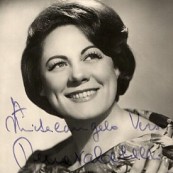
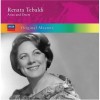
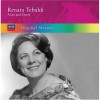
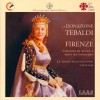



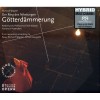
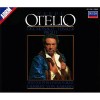
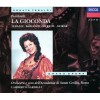
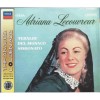

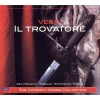
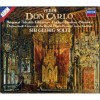
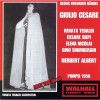

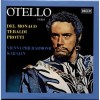
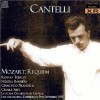
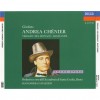
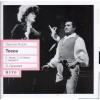
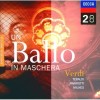
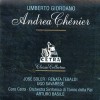

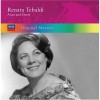
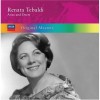
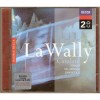
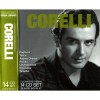
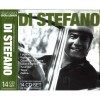
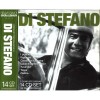
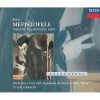

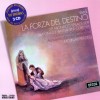

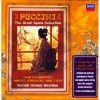

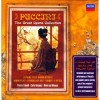
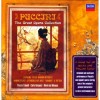



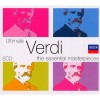
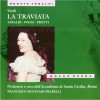

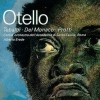


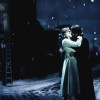
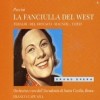

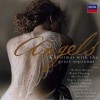
![Great Voices Of The Century - Sopranos, The Greatest Arias [CD1 of 4]](http://static.classicalm.com/repository/collection-cover/small/1401-img1403276640837603.jpg)
![Christmas Adagios [CD1 of 2]](http://static.classicalm.com/repository/collection-cover/small/1219-img1354498625885822.jpg)
